On April 10th, 1912, the RMS Titanic set sail from Southampton, embarking on a journey that would find a tragic end just five days later. It has been over 100 years since the Titanic’s sinking, but the dawn of a new century has done nothing to diminish its legacy.
Countless people have written about the subject, but the following Titanic books venture beneath the tip of the iceberg to bring lesser-known stories to the surface. From personal accounts and rediscovered artifacts to scientific inquiries into the ship’s construction, each one brings this moment of history into startling life—and keeps it firmly fixed in our hearts and minds.

Who Sank the Titanic?
The horrific history of the RMS Titanic gets even scarier as investigative reporter Robert J. Strange studies the infamous disaster at sea. As Strange dives into forensic evidence, he uncovers secrets that have been hidden for over 100 years. The Titanic was presented as a strong, safe ship—a massive marvel that showed the U.K. as masters in shipbuilding. However, the horrific sinking that ensued on its maiden voyage didn't reflect this at all.
Some claim the disaster could have all been prevented if it hadn’t been for the greed and negligence of those involved in its making. Everyone—including owners, planners, builders, and government ministers—was well aware of the cheap and recycled scraps of iron that were used to build the ship, yet it set sail regardless. Containing five years of extensive research, this untold history surrounding who was responsible for the Titanic's sinking is a compelling read.
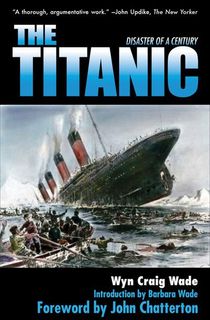
The Titanic
The glamour and innovation of the Titanic is enough alone to be alluring, but the unfortunate sinking of the ship has made many intrigued by its history. Many questions have risen in the years since the infamous marine tragedy—questions involving the lack of precautions taken and about those who survived (a third of the survivors were crew members).
This book provides an in-depth look at what actually happened during the ship’s last significant hours. By focusing on the US Senate hearings following the catastrophe, eyewitness accounts and the 1985 Woods Hole expedition, Wade has recreated the Titanic's final hours as best as we can imagine them.

A Night to Remember
Though published in 1955, A Night to Remember is still hailed as “the best Titanic story after all these years” (Library Journal). Even James Cameron, the director of the blockbuster hit, drew inspiration from Lord’s interviews with 63 survivors, all found in this New York Times bestseller. Rich with minute-by-minute, sensory details, A Night to Remember reads like your favorite historical novel—and it’s a must-have for any Titanic buff.
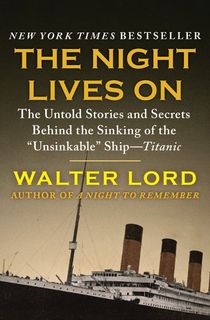
The Night Lives On
Lord returned to his studies after the 1998 film reignited interest in the ship’s sinking. While his first book relayed survivor accounts from the night-of, The Night Lives On investigates the more technical, still-unanswered questions regarding the ship’s build, the ineffectiveness of wireless operators, and more. It’s the perfect companion book to A Night to Remember and, like its predecessor, no Titanic collection is complete without it.

Remembering the Titanic
Unfortunately, there is no novelization of James Cameron's Titanic. But if you're looking for historical fiction about the tragic event, you can still read this young adult novel by Diane Hoh. Four teenagers who survived the shipwreck are still struggling to cope one year later, and two of them feel very similar to Jack and Rose: Elizabeth, a first-class passenger who lost her father, and Max, the struggling artist she met on the ship.
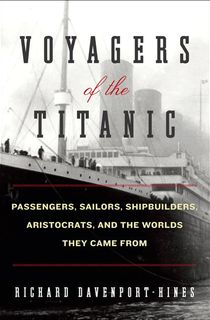
Voyagers of the Titanic
Where Davenport-Hines’ Voyagers of the Titanic really shines is its exploration of the social classes, and how its divisions doomed or saved thousands of lives. Readers get a glimpse of the ship’s most notable (and most commonly studied) passengers, but of the lesser-known folks belowdecks as well.
From shipbuilders to refugees, Davenport-Hines’ “astonishing” account “allows [readers] to know, in painful detail, the men and women on that fateful voyage” (Julian Fellowes, creator of Downton Abbey).

The Truth About the Titanic
On April 15th, 1912, Archibald Gracie clung to an overturned boat in the cold Atlantic—and survived the sinking. The Truth About Titanic is his story. Beyond his memories of that dark and early morning, Gracie recounts the disaster’s aftermath—including his and other survivors’ personal testimonies—which makes Truth a classic part of Titanic’s literary canon.

The Band That Played On
“They kept it up to the very end,” said one Titanic survivor. She was referring to the group of musicians who, even in the face of imminent death, continued to play “Nearer, My God, to Thee” on the ship's decks. Journalist Steve Turner offers a fresh perspective by exploring these men’s lives, uncovering their twisted family trees, romantic histories, and unique quirks (clairvoyance, for example) along the way. We may never know why the men played until the very last, but The Band That Played On is further proof that this final act was one of quiet heroism.

Gilded Lives, Fatal Voyage
Naturally, the grandeur of the Titanic attracted no shortage of wealthy and glamorous characters. There was the millionaire-investor, John Jacob Astor, and President Taft’s closest confidant, Major Archibald Butt. Among them were also famous actresses, artists, writers, and royals—all of whom get their due in Gilded Lives, Fatal Voyage. Hugh Brewster’s avoidance of common stereotypes humanizes Titanic’s elite passengers and provides a “nuanced account” of life during the Gilded Age (New York Times Book Review).
Related: 8 Books Set During the Gilded Age

Shadow of the Titanic
The effects of the catastrophe extended beyond a sunken ship and 1,500 victims. Those who managed to escape with their lives endured years of trauma but persevered in the shadow of disaster. Award-winning literary biographer Andrew Wilson decided to cast his eyes beyond the sinking, and to the fates of Titanic’s 705 survivors. By beginning where most stories end, Wilson’s Shadow of the Titanic is a “fascinating slice of the [Titanic story]” that provides new insight.
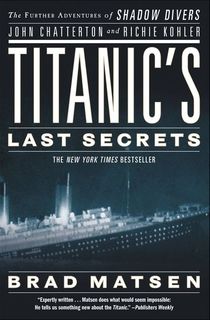
Titanic's Last Secrets
Underwater archaeologists Chatterton and Kohler wrote about their discovery of a sunken U-boat in their bestseller, Shadow Divers. With the help of author Brad Matson, they returned with Titanic’s Last Secrets, where they focus on the ship’s structural engineering and reveal just how “unsinkable”—or not—the RMS Titanic truly was. Their findings on how and why the ship sank so quickly will “tell [readers] something new” and captivate longtime enthusiasts.

Titanic
Filson Young’s book was released just 37 days after the sinking, the very first of the hundreds that would follow. As a longtime writer and BBC correspondent, Young approached his tale with a journalistic eye (he includes the daily menus, for instance) while his touching survivor interviews ring with the devastating immediacy of the tragedy.

Titanic: Women and Children First
Judith B. Geller is something of a Titanic expert. She is the former president of RMS Titanic, Inc. and the director of its hugely successful exhibition. She also wrote this book—one of the first to focus on the young and female passengers. Her collection of diary entries, letters, newspaper reports, and photographs gives voice to the struggles women faced on and off the ship. While women and children were supposedly given priority seating on the lifeboats, Geller’s look at 20th century society reminds readers that it was mostly social status that determined one’s fate. For many, "priority seating" came on the condition of her class.

The Loss of the S.S. Titanic: Its Story and Its Lessons, By One of the Survivors
This next book is absolutely remarkable, as readers relive that fatal night through a first hand account. Beesley presents the whole voyage through his perspective, from setting sail in Southampton to the ship's inevitable downfall. There is no other feasible way of getting closer to the event than Beesley’s retelling. His account is undeniably personal and will make you feel as if you’re on board alongside him. The book was published only two months after the tragedy, when the details of the incident were fresh in Beesley’s mind. There’s nothing like experiencing the heroism and cruelty through the eyes of a second-class survivor. It's gripping and will cling to you after the final page.
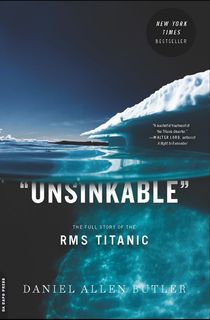
Unsinkable
If you’re looking for an updated version of the story, Butler’s passionate narrative explores everything involving the famous ship. From revisiting and revising all the facts we already knew of the Titanic’s history to recent discoveries of the ship wreck. Butler is thorough in providing enough information on the Titanic—he spent nearly 30 years studying the ship’s history. He draws from primary sources and period accounts to dismantle many popular beliefs on the key factors of not only the ship’s sinking, but also the safety protocols and the inadequate actions taken.
Butler spends several chapters discussing investigations and inquests that followed the sinking, and how it caused massive reforms on ocean liners. He also debunks the myth that the Titanic was attempting to break speed records; instead, the ship was actually marketed as a luxurious ship, which meant it would sacrifice speed due to its massive size. Furthermore, the author makes the startling revelation that a nearby ship ignored the Titanic’s distress call out of fear of awakening their captain. These, among various other hidden facts Butler presents, will leave you questioning what you thought you knew about this tragedy.

The Story of the Wreck of Titanic
For those of you left wanting to learn more, The Story of the Wreck of Titanic not only provides the history of the ship but also visual representations. This book has a laser focus on the crucial moment when the “unsinkable ship” began to draw near the ocean floor. We don’t follow a love story, but rather a tale of ambition—as a man attempted to build something “God himself could not sink.” Everett follows the excruciating three hours passengers and crew members were forced to follow the constant changes made during that night.
Even within the last minutes, many passengers believed they would survive, despite not having been placed in a lifeboat. There is a frightening intimacy in this account, as the novel holds original drawings and photographs that are sure to bring your closer to that night.
This post is sponsored by Open Road Media. Thank you for supporting our partners, who make it possible for Early Bird Books to continue publishing the book stories you love.
Featured image of the RMS Titanic: Wikipedia







